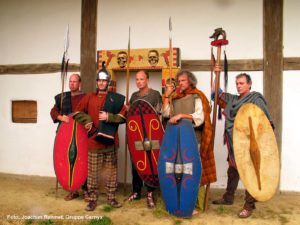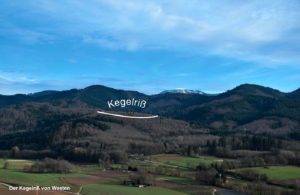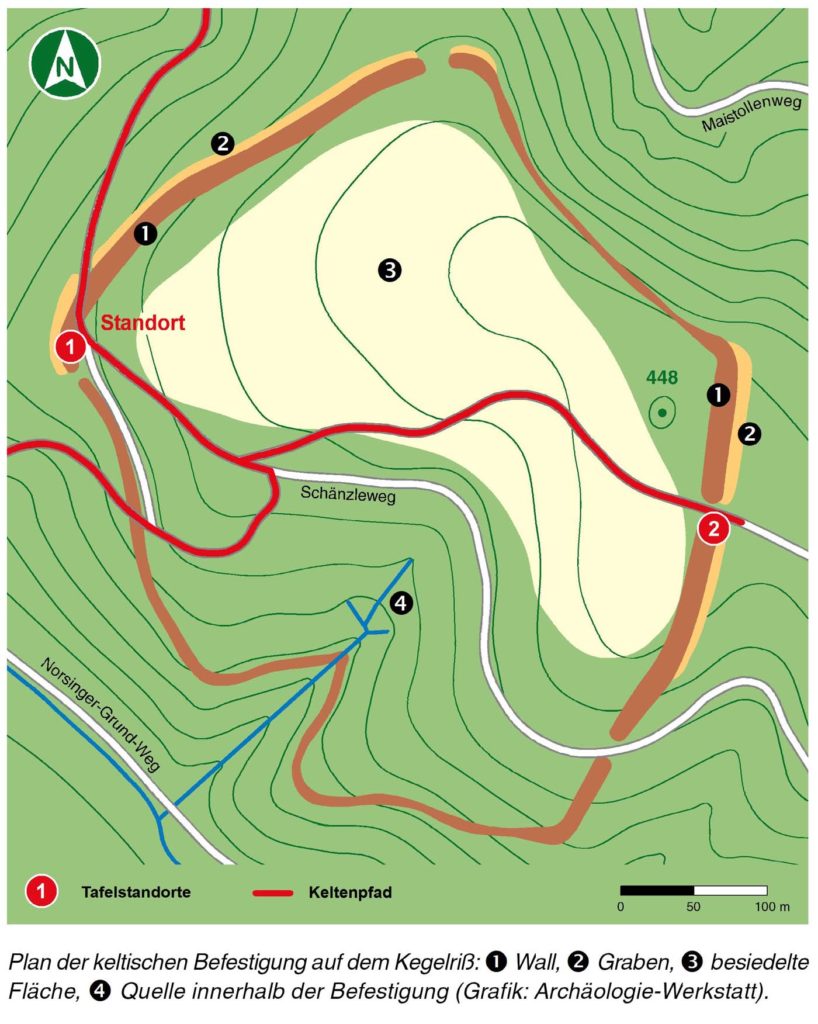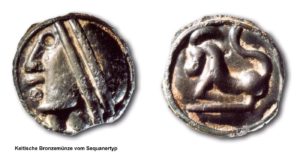1. Celtic hilltop settlement
Who were the Celts?
The Celts were the first peoples in the north of the Alps whose name was handed down. They were mentioned by the Greek historians Hekataios and Herodot about 500 before Christ and called Keltoi or Galatoi and later by the Romans Celtae or Galli. Essential parts of Central Europe between the Carpathian Mountains and the Atlantic coast were settled by Celtic tribes. We do not know, if they had described themselves as Celtic tribes or if they had understood themselves as one unity, since they did not leave any written records. In addition to their specialisation in crafts and the growing importance of the long-distance trade a hierarchically structured society being mainly agrarian in nature, developed.
Kegelriß
The popular name of the hilltop settlement Kegelriß comes from a traditional legend handed down in the 19th century (kindly see board No. 2) telling that there were silver skittles with golden balls in the settlement. Both German words Kegelriß and Kegelspiel (skittles) mean nearly the same. Today the hill calls Fohrenberg, however, in the field of research the popular name Kegelriß has become current since the 19th century.
Archaeological research
The circular fortification wall situated on the Kegelriß and having a dimension of 16 hectares has already been known since the middle of the 19th century and belongs to the late Celtic central places in the Breisgau region among other places such as Limberg close to Sasbach, Tarodunum close to Zarten, Riegel-Rotacker as well as the Münsterberg (cathedral hill) in Breisach. The Roman commander Julius Caesar used the term Oppidum (Latin term for an urban-like settlement) for these central, fortified settlements built by the Celts in the first century before Christ.
The central location Ehrenstetten-Kegelriß differs from the other central places because it is not located at the most important trading routes, but in the vicinity of silver and copper deposits. Therefore, it is thought that the Celts created the settlement in combination with their mining activities. The found production remains prove at least that coins were produced, and bronze was treated.
In 1989 excavations were carried out directly at the circular fortification wall. A transverse section passing through the wall was created and during this work the construction of a wall consisting of wood and soil could be proved. Fortifications like these were typical for the late Celtic era (kindly see board No. 2).
Findings from the Celtic era
During inspections on the Kegelriß 57 Celtic coins made of bronze and silver were found. Thanks to found cast parts of bronze coins, the production of coins could be proven. By the way, the Celts were the first who introduced a currency in Central Europe. They had already known and copied the currency due to their trade with the higher developed world of the Greeks.
Further findings such as bronze brooches, a part of a millstone, some iron findings (a key, a kettle hook as well as fragments of an iron kettle) prove that the Celts settled here between 150 and 80 before Christ. Fragments from Roman bronze vessels document the trade with the Roman Empire.



